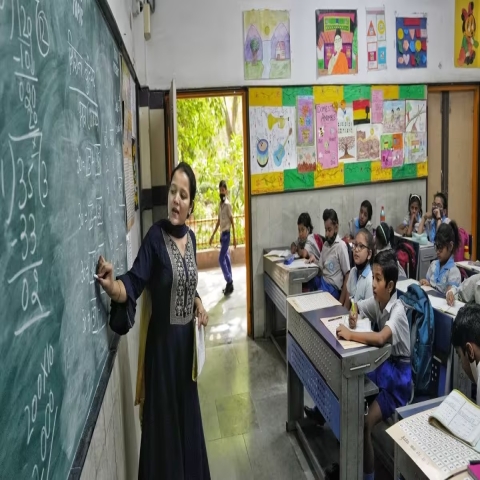
National Education Policy–2020 And Classroom Transactions
National Education Policy – 2020 aims to provide quality education by 2030 not only for life changing but also mind crafting and character-building experiences along with a sound knowledge base. NEP-2020 also envisages to have an education system based on Bharatiya ethos for transforming India into a global knowledge super power.
Hence, there is a big shift in the way we educate. Now the concentration is more on Holistic Education (Samagra Siksha) along with all-round development (Sarvangeena Vikasa) of a student. The thrust is more on building competencies and specific learning outcomes with a reduced content. Now that teacher has to get enriched, empowered, upskilled, upgraded and updated to meet these challenges.
To put it in brief following are to be observed in class room transactions and initiatives.
- Learning Teaching Methods (Pedagogical Changes)
1.Joyful Learning
2. Experiential Learning
3. Interactive Learning
4. Activity Based Learning
5. Holistic (Head, Heart, Hand) Learning
6. Learner centric process
7. Inclusive learning
8.Inquiry based learning
9. Collaborative learning
10. Creative learning
11. Communicative (interactive)
12. Digital learning
13. Discussion oriented
14. Multi-disciplinary
15. Competency based
16. Knowledge based
17. Logical thinking based
18. Scientific temperament based
19. Problem solving
20. Interdisciplinary approach
21. Trans-disciplinary approach
22. Teaching under the sky
- Learning Strategies
1.Reading and reflection
2. Group task& presentation
3. Seminar
4. Dramatization
5. Quiz
6. Conferencing (press or general)
7. Mind / concept mapping
8. Mock parliament
9. Field trips and visits
10. Interview
11. Debate
12. Story narration
13. Pictorial story/ graphic reading/image harvesting
14. Emotional formation
- Learning Areas of integration in the concerned subjects
1.Bharateeya Jnana Parampara
2. Music, Dance, Drama
3. Art, Drawing, Painting
4. Value Education
5. Culture transmission (Sensitization)
6. Digital Literacy
7. Adhara Bhoota Vishaya
8. Vocational Education
9. Whole class activity
10. Group activity (Homogeneous & Heterogeneous)
11. Pair activity
12. Outside the class room (Societal activity)
There is also a big shift in moulding students, which we have to plan every day and in every activity.
- From “Learning helplessness” to “learning optimism”.
- From “What to learn” to “how to learn”?
- Sparking curiosity, nurturing creativity, instilling confidence and caring through hand-on experience.
- Questioning, observing, experimenting, associating (connecting dots) and networking.
We have to plan behavioural shifts among the students to facilitate joyful, engageable and experiential learning.
- From yes to why?
- From looking to observing
- From being passive to learning to explore
- From fear to confidence
- From acceptance to leadership
- From textbook-bound to being hands on
- From self to social orientation
These are all indicative but a comprehensive discussion has to take place among the teachers in groups at the school level. Of-course we are free to add as per experience and suggestions from elders and mentors.
✍ D. Ramakrishna Rao
(Author is Retired Principal and National President of Vidya Bharati.)
